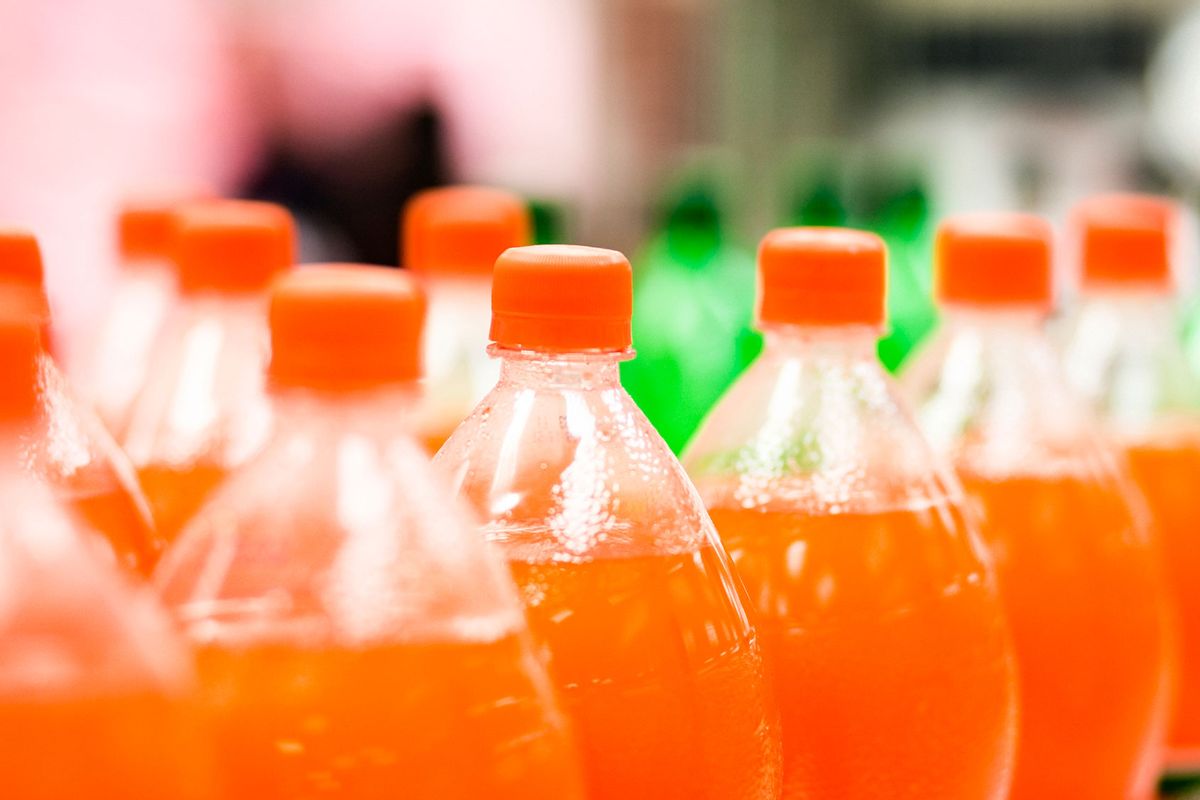For many years, brominated vegetable oil, or BVO, existed in something of a regulatory gray area. When added in small amounts, the product serves as a stabilizer in some orange-flavored beverages and prevents the citrus flavoring from floating to the top. In the early 1960s, the Food and Drug Administration placed BVO on the agency’s original “GRAS” list, which encompassed ingredients that were “generally recognized as safe.”
BVO also contains bromine —an ingredient found in brominated flame retardants, which are added to products like textiles and building materials to prevent the spread of fire. These wildly disparate uses raised questions among consumer groups and health advocates over whether BVO, while generally recognized as safe by the federal government, was actually safe, and for decades, the FDA maintained that it was (though eventually heavily restricted the amount that could be added to beverages).
However, earlier this month, on July 3, the FDA issued a final rule to revoke the regulation allowing the use of BVO in food. So, how did we get here and what’s next?
Why did the FDA ban BVO?
While BVO had been used as a food additive since the 1920s, the FDA, in collaboration with the National Institutes of Health, decided to reassess the ingredient’s safety for human consumption in 2014.
After several years of experiments, researchers published their findings in Food and Chemical Toxicology in 2022.
“Past studies have raised concerns about potential toxicities from consuming BVO,” researchers wrote, noting that prior research on BVO’s toxicology in rats had design limitations, such as not evaluating both sexes and insufficient sample sizes. These studies, conducted from the late 1960s to the early 1990s, highlighted various toxic effects, but lacked comprehensive analysis.“To investigate further these toxicities, we conducted a 90-day dietary exposure study in Sprague Dawley rats and analyzed tissue distribution of the main metabolites.”
Feed meal was blended with varying concentrations of BVO to create test diets for rats. Researchers eventually found that high doses of BVO disrupt the hypothalamic-pituitary-thyroid axis, confirming its potential toxic effects on the endocrine system. This is in addition to past research that has suggested consuming BVOs could result in neurological and memory loss, according to Psychiatrist.
“High levels of bromine have been associated with neurological symptoms such as memory loss, tremors, fatigue, and headaches — a constellation of effects known as bromism,” they write. “Scientists worry that long-term exposure to BVO could exacerbate these symptoms, potentially leading to more serious and persistent neurological conditions.”
In 2023, while federal action had still yet to be taken, California became the first state to ban BVO under the California Food Safety Act. Then finally, in a statement issued on July 2, the FDA wrote that “the agency concluded that the intended use of BVO in food is no longer considered safe after the results of studies conducted in collaboration with the National Institutes of Health (NIH) found the potential for adverse health effects in humans.”
We need your help to stay independent
“The FDA took this action consistent with our regulatory authority over ingredients added to food, which includes reassessing previously evaluated food ingredients and addressing safety concerns,” it continued. “Reassessing the safety of food ingredients as new, relevant data become available, is a priority for the FDA and a key part of our food safety mission.”
How many food products in the United States currently use BVO?
Many American beverage manufacturers had already phased out using BVO in their product formulations, in part because it’s a chemical that’s banned in many other parts of the world. However, according to Scott Faber, senior vice president of governmental affairs at the Environmental Working group, it is still used “especially in so-called off-brand products, including store-brand products and lesser-known, smaller brands that are sometimes sold regionally.”
Notably, PepsiCo announced in 2022 that they had removed BVO from Mountain Dew.
What’s next?
According to the FDA, the rule is effective on Aug. 2, and companies need to be compliant within a year of that date. This provides “the opportunity for companies to reformulate, relabel, and deplete the inventory of BVO-containing products before the FDA begins enforcing the final rule.”
While several consumer groups have lauded the FDA’s decision, others say it feels like too little too late, and called for more research into the effects of other food additives.
“The FDA’s decision to ban brominated vegetable oil in food is a victory for public health. But it’s disgraceful that it took decades of regulatory inaction to protect consumers from this dangerous chemical,” Faber said. “It's outrageous that for years Americans have been consuming a chemical banned in Europe and Japan. The FDA’s belated action on BVO underscores the urgent need for more rigorous and timely oversight of food additives.”
Read more
about this topic



Shares